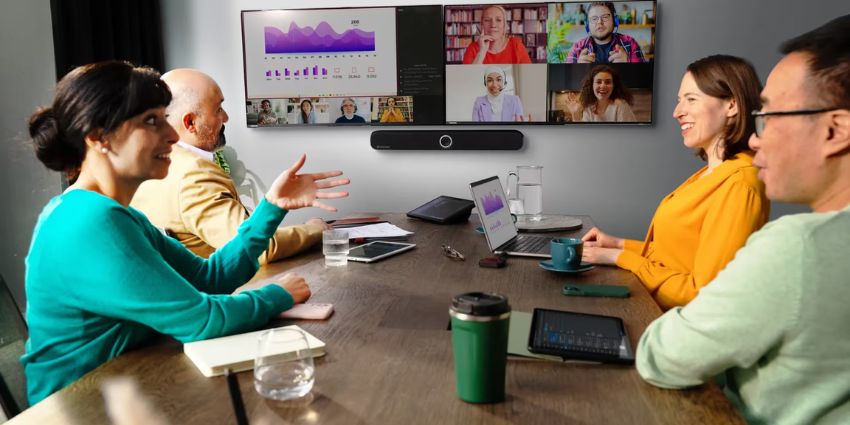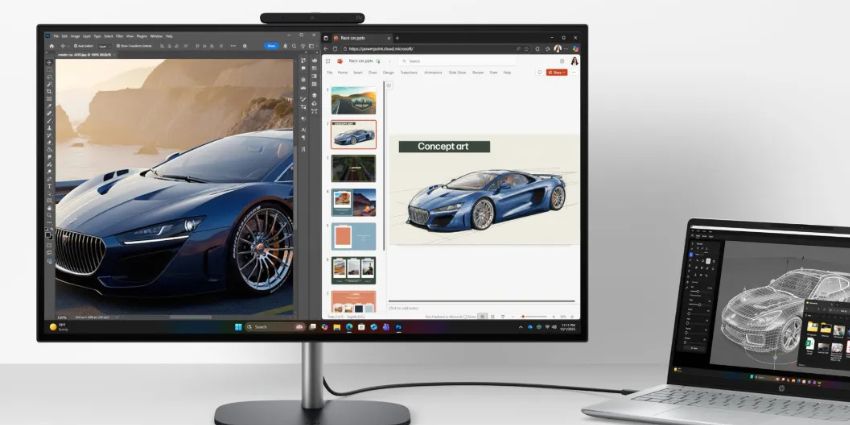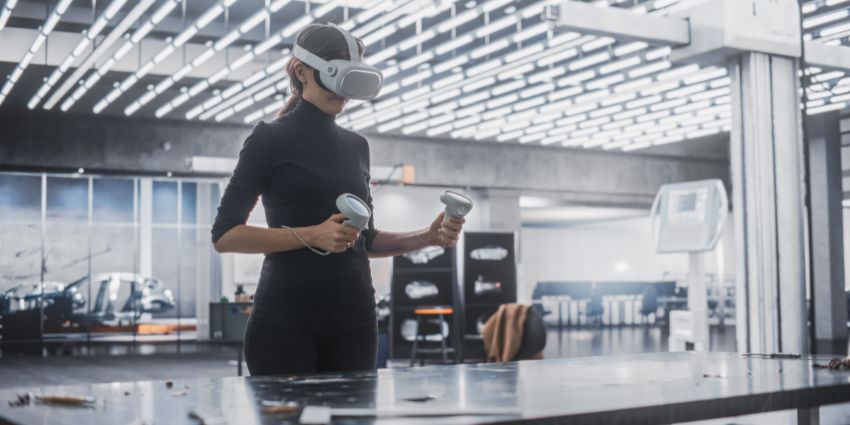In the post-pandemic corporate landscape, hybrid work has evolved from an emergency measure to a permanent fixture.
UC Today got access to IDC’s latest research the IDC 2025 Future of Work Survey 2025, and according to my findings, 67% (Source IDC The Flexible Workplace: European Employee Experience Analysis, EMEA 2025, May 2025, #EUR152796625) of professional workers are now at least partially remote, suggesting that flexible work arrangements are a strong sentiment.
However, due to a raft of changing economic conditions, challenges in maintaining corporate culture and employee engagement, some companies are now trying to turn the tide on home working, whether it’s an increase in the number of days workers need to be in the office or a full-time return.
However, these shifting practices have not all gotten off to a great start.
Employee opposition to these orders in the form of poor attendance is holding back pushes to bring staff back under one roof.
With strong resistance to consider, the last thing companies should do once they get staff through the doors again is give them a bad office experience.
But far from being an issue of not having enough coffee in the machine or space in the fridge, one of the biggest annoyances of staff working in the office is issues relating to poor collaboration technology.
“We found out that 96% of organizations continue to struggle to adapt office setups following the hybrid revolution,” Mick Heys, VP of IDC, said of IDC’s WW Future of Work Survey, June 2024, EMEA.
“The biggest problem with this is a human problem, but second to that, our research found that technology challenges played a big part.”
The IDC study found problems trying to set up meetings, bad audio quality during them, and just a general poor experience could actually cost companies more than a dip in employee satisfaction—it could be contributing to them leaving the business.
The Evolution of Workplace Technology Priorities
The technology industry’s focus regarding workplace solutions has undergone several transformations since office-based work trends have shifted post-pandemic.
Companies rushed to implement basic video conferencing capabilities and reservation systems to accommodate the sudden increase in remote meeting attendance.
“If we go back three years ago, it was all about installing meeting room technology and making it bookable. You’ve now got access to this new equipment and you can book the meeting room to use it,” Heys explained.
This was, in part, satisfactory for the time being because the need for solutions outweighed the need for them to be high quality.
“Often, people go into the meeting room, they’ll spend up to five minutes trying to get the technology working. After five minutes, they do one of two things: sit around a laptop and do the call there, thereby throwing all that investment into quality, security, and everything else out the window, or they call IT,” Heys explained.
The next issue came from how these spaces were actually being used.
“A lot of people were booking the equipment and not turning up,” explained Heys.
Companies began implementing sophisticated systems to predict meeting room usage patterns and improve efficiency.
However, despite these measures, the fundamental issues with hybrid work remained unresolved.
The Hidden Costs of Suboptimal AV Technology
IDC’s research has uncovered a critical but often overlooked aspect of hybrid work challenges: the profound impact of poor AV technology on business outcomes.
The consequences extend far beyond mere inconvenience, affecting everything from organizational image and productivity to employee well-being and talent retention.
“Bad audio, for example, in mixed-mode meetings has a significant impact on outcomes,” Heys explained.
“There’s a paper by Newman and Schwartz(1) that found that audio quality is directly correlated to the perception of trustworthiness. So, if you’ve got a sales team who sound bad in a pitch meeting, they immediately seem less trustworthy,” Heys said.
Equally, a subsequent 2025 Yale University study solidified this finding, showing that poor audio can even make the speaker sound less intelligent, regardless of the content.
This perception issue can have tangible business impacts, particularly for client-facing teams.
Furthermore, Heys outlined how research from Japan has revealed that poor audio quality creates measurable physical stress responses in employees.
“They found, yes, bad audio causes stress through cognitive dissonance, and it’s cumulative,” said Heys.
But the problems don’t stop there. There are also significant implications for the growing implementation of AI tools in the workplace.
“I was in a meeting and I had to introduce my colleague, Nathan, and it was one of those where you can see the live transcription. You know, they had it running down the side. So I actually said, this is Nathan he’s a member of our consulting team. But the transcription said, this is Nathan. He’s a member of our insulting team,” Heys shared.
These transcription errors can undermine the effectiveness of AI tools that increasingly rely on accurate meeting data.
“If you don’t have good audio quality, you’ve got implications for the outcome of the meeting. You’ve certainly got implications in terms of any AI-driven enablement,” Heys noted.
Organizations investing heavily in AI capabilities may be unknowingly compromising their effectiveness by underinvesting in foundational audio-visual technology.
“So if you think about the added stress, the loss of productivity, the potential misunderstandings in the meeting capture—you know, suddenly buying the cheapest equipment maybe doesn’t seem that compelling.”
The Business Case for Optimizing Your Work Environments
IDC’s latest research makes a compelling business case for investing in high-quality hybrid work environments.
Staff retention is one of them. Soft costs, spawned from staff leaving, including things like lost knowledge, increased errors, and low morale are estimated to make up about two-thirds of the total turnover cost.
Yet the IDC 2025 study unveiled some startling statistics: “Of the ones who aren’t looking for a job, 39% is because of unfavorable economic conditions. So if the economy gets better, more people will start looking for another job,” Heys said.
Its research methodology examined employee satisfaction and engagement by tracking job-seeking behavior and correlating it with workplace factors.
“We first identified whether the employees were job-searching, then compared the areas they cited as areas of discontent with their job,” Heys explained.
The results showed that employees looking for new jobs consistently reported higher levels of dissatisfaction with their work environments.
“For instance, 40% of job-seekers cited inability to find focus space as a reason for their discontent, compared to 36% of those not seeking new employment,” Heys explained.
This pattern repeated across multiple workplace factors.
Even more concerning for employers is the trend in job-seeking behavior. “2023, on average, 22% of workers—and we’re talking about knowledge workers in offices—were looking for another job. Last year, it’s up to 25%. This year, it is 27%,” Heys reported.
The economic factor might be the only thing holding back the floodgates for more resignations.
Yet what’s particularly noteworthy is that workplace environment factors are becoming increasingly important in these decisions.
“Looking for better corporate culture is increasing, from 29% to 31% in a year,” Heys noted. “The industry has caught up with the actual sentiment that the workplace is important in terms of attracting and retaining employees.”
Although seemingly a combination of stray statistics, Heys notes that when combined, they create a revealing and clear picture of the problem.
“Having an old-school office in a modern hybrid world is causing more people to leave. We can prove that at the moment. Now, you could then factor in the cost of recruiting somebody, and you’re starting to get the models,” he said.
Creating Inclusive Hybrid Experiences Through Technology
The future of successful work environments lies in creating truly inclusive experiences that break down the barriers between in-office and remote participants.
This requires a fundamental rethinking of meeting room technology, particularly around audio quality and ease of use.
“It’s not always the people dialing in remotely,” Heys pointed out. “Sometimes you’ve got six people on-site, two people dialing in, and unless you’ve got a good quality system there, you can’t always hear everyone in the room equally well.”
This asymmetry in meeting experiences creates frustration and impedes collaboration. However, technology challenges extend beyond audio quality to basic usability. All too often, the physical devices in meeting rooms – from control panels with too many buttons to mismatched AV hardware – are anything but intuitive, leaving users fumbling through complex setups instead of starting their meetings with a single, simple action.
Organizations looking to create truly inclusive hybrid environments need to prioritize both audio quality and ease of use in their technology solutions.
“I think it’s one of those things where doing the right thing makes smart financial sense,” Heys concluded. “Focusing on the well-being of people allows you to present your company in the best light, reduce turnover, increase productivity, et cetera.”
Those that recognize the critical role of AV technology in creating inclusive, productive, and satisfying work environments will gain a significant competitive advantage in attracting and retaining top talent and bringing their employees back to the office.
Considering how workplace technology is not merely an operational necessity but a strategic investment in success, organizations that prioritize thoughtful adoption and integration of AV technology will be best positioned to thrive in the evolving world of work.
Shure, which has sponsored IDC research in this area, helps companies take that step to optimize meeting spaces for hybrid work and enhance it for their employees. To learn more, visit Shure.







